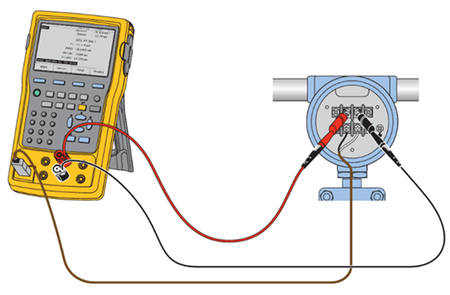2-wire, 3-wire, and 4-wire transmitters refer to the transmitters whose outputs are analog DC current signals.
They have quite many differences in working principles and structures, not only limited to wiring forms of the transmitters.
1. Transmitter Wiring Types
After the appearance of two-wire transmitter, there was the concept of "multiple wire system". This is the result of the wide application of electronic amplifier in instruments.
The essence of amplification is a process of energy conversion, which is inseparable from power supply. Therefore, the first 4-wire transmitter appeared. Two wires of the 4 wire transmitter are responsible for the power supply, and the other two wires are responsible for the output of converted and amplified signals (such as voltage, current, etc.).
With the appearance of the DDZ-Ⅱ electric unit combination instrument, the 4-wire system with the power supply of 220V AC and the output signal of 0-10mA DC are widely used. At present, you can still see these transmitters in some factories.
The instrument of electric unit combination adopts the process control system and analog signal standard of International Electrotechnical Commission (IEC). That is, its instrument transmission signal is 4-20mA DC, and contact signal is 1-5V DC, which means that it uses the signal system of current transmission and voltage reception. By using 4-20mA DC signal, the field instrument can be made with 2 wires.
2. 2-Wire Transmitter
To make 2-wire transmitter, the following conditions must be met simultaneously.
2.1 V ≤ Emin - ImaxRLmax
The output voltage V of the transmitter is equal to the specified minimum supply voltage minus the voltage drop of the current on the load resistance and transmission wire resistance.
2.2 I ≤ Imin
The normal working current "I" of the transmitter must be less than or equal to the output current of the transmitter.
2.3 P < Imin (Emin - IminRLmax)
The minimum power consumption P of the transmitter should not exceed the above formula, and usually P < 90mW.
In the above formula: Emin = minimum power supply voltage.
For most instruments, Emin = 24 (1-5%) = 22.8V.
5% is the allowable negative variation of 24 V power supply.
Imax=20mA;
Imin=4mA;
RLmax=250 Ω+ Transmission line resistance.
When designing the transmitter, if it meets the three conditions above, it can be made with 2-wire transmission.
The two-wire system means that the power supply and load are connected in series with a common point.
Only 2 wires are used for the signal communication and power supply between the field transmitter and the instrument in the control room, which work as both the power line and the signal line.
The signal starting current of the two-wire transmitter is 4mA DC, which provides static working current for the transmitter. At the same time, the electrical zero point of the instrument is 4mA DC, which does not coincide with the mechanical zero point. This kind of "live zero" is helpful to identify faults such as power failure and disconnection.
Moreover, the two-wire system is also convenient for the use of safety barriers, which is conducive to explosion-proof.

Figure 2: 2-wire loop powered transmitter
3. 3-Wire Transmitter
In order to reduce the volume and weight of the transmitter, improve the anti-interference performance and reduce the wiring, some instrument factories change the power supply of the transmitter from 220V AC to low voltage DC.
For example, the power supply is taken from the 24V DC power box, and the low-voltage power supply creates conditions for negative line sharing. In this way, a 3-wire transmitter is designed.

Figure 3: Diagram of 3-wire transmitter
The circuit diagram of 3-wire transmitter is as shown in Figure 3. In a 3-wire transmitter, one wire is used as the positive end of the power supply and the other as the positive end of the signal output. The negative end of the power supply and the negative end of the signal share one wire.
Its power supply is mostly 24 V DC, the output signal is 4-20 mA DC, and the load resistance is 250 Ω Or 0-10mA DC, load resistance is 0-1.5k Ω. Some are of mA and mV signals, but the value of load resistance or input resistance varies with the output circuit.
4. 4-Wire Transmitter
Due to the popularity of 4-20mA DC (1-5V DC) signal system and the convenience of connection in control system application, the signal system is unified.
In addition, some non-electric unit combination meters are also required to adopt a signal system with an output of 4-20mA DC, such as electric quantity meter.
However, due to the complexity of the conversion circuit and high power consumption, it is difficult to satisfy all the above three conditions.
Therefore, by using the method of external power supply, a 4-wire transmitter with output signal of 4-20mA DC is designed and manufactured.

Figure 4: Diagram of 4-wire transmitter
The circuit diagram of 4-wire transmitter is as shown in Figure 4. Most 4-wire transmitters are powered by 220 V AC, and some may be powered by 24 V DC. Its output signal is in the form of 4-20mA DC and load resistance is 250 Ω, Or 0-10mA DC, and the load resistance is 0-1.5k Ω. Some 4-wire transmitters have mA and mV signals, but the value of load resistance or input resistance varies with the output circuit.
5. Change from 2-Wire to 4-Wire and Vice Versa
It can be seen from the above that there are different reasons for the design of transmitters of different wiring types.
We do not suggest users to change the wiring of transmitters. The change is difficult and of little practical meaning.
If we want to change a 4-wire transmitter of 0-10mA DC transmission signal into a 2-wire transmitter, the first problem is that its initial current is zero.
When the current is zero, the electronic amplifier of the transmitter can not establish the working point and work normally.
If the DC power supply is used and the original constant current of the instrument is ensured, assume the load resistance of the transmitter is 0-1.5kω, and the resistance of the feedback moving coil connected in the system is 2kω. When the output signal is 10 mA, the voltage drop of these two parts will be greater than 24 V, that is to say, with 24 V DC power supply and 0-1.5 kω load, it is impossible to guarantee the constant current, so it is impossible to use 2-wire transmission.

Figure 5: Rosemount Transmitter 3951CD2A22A1JM5Q4HR5
In 1970s, an instrument factory changed 4-wire transmitter of 0 - 10mA DC to 2-wire transmitter.
Here is how the change was done: improve the original transmitter circuit, and increase the power supply voltage to be 48V DC. But the initial current of the transmitter still can not be zero, so the negative current is used to offset the initial output current of 4mA on the load resistance. However, such transmitter products have not been promoted and applied.
If you want to change 2-wire transmitter into 4-wire, there is no need at all. Moreover, this is a technical retrogression.
6. Summary
Here we can conclude that due to the different working principles and structures of various transmitters, different wiring types are designed.
For users, when selecting transmitters you should consider the actual use situation, such as the unification of signal system, explosion-proof requirements, requirements of receiving equipment, investment and other issues.
Please also note that although the output signal of 3-wire and 4-wire transmitters is in 4-20mA DC, the output circuit principle and structure are different from 2-wire transmitters, so you should take the following problems into consideration when using the transmitters.
* Can you connect the negative output terminal to the negative line of a 24V power supply?
* Can you connect the transmitter with other instruments? You can take isolation measures if necessary. For example, use distributors and safety barriers to avoid additional interference.
Thank you for your reading and more information please visit https://okmarts.com/







